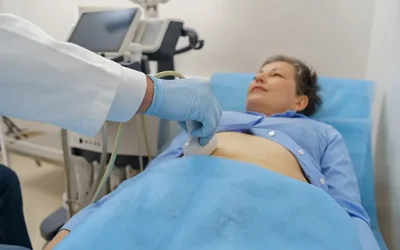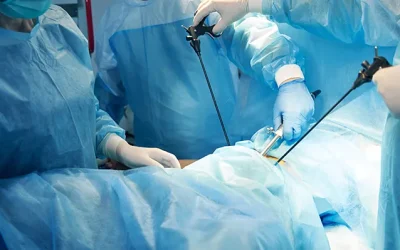A minimally invasive surgical procedure to eliminate a lady’s uterus is called a laparoscopic hysterectomy surgery. Laparoscopy hysterectomy surgery in Dubai, UAE is utilized rather than open surgery since it achieves fewer cuts, less trouble, and quicker recuperating times.
What happens during the Laparoscopic Hysterectomy Procedure in Dubai?
During the laparoscopic hysterectomy procedure in Dubai, the surgeon inserts a little camera-stacked tube called a laparoscope is placed through a little passage focusing on the abdomen. This camera helps the expert see the pelvic organs for the effective ejection of the uterus.
Types of Laparoscopic Hysterectomy Surgery in Dubai, UAE
There are several types of laparoscopic hysterectomy surgeries in Dubai, UAE, each tailored to the patient’s medical needs:
- Total Laparoscopic Hysterectomy (TLH)
In this procedure, the entire uterus is removed, including the cervix, with the use of laparoscopic tools. - Laparoscopic Supracervical Hysterectomy (LSH)
This laparoscopic hysterectomy surgery in Dubai involves the removal of the upper part of the uterus, leaving the cervix intact. Given this, it has less invasive procedures and may preserve more pelvic structure. - Laparoscopically Assisted Vaginal Hysterectomy (LAVH)
In this technique, a couple of parts are performed laparoscopically, while others are taken out through the vagina.
For ladies who want an expert surgeon for laparoscopic hysterectomy procedure in Dubai, one of the wise choices would be Dr. Talakere Usha Kiran. She has vast experience and skills added to her repertoire in her belt in vNOTES/Scarless Surgery, Advanced Minimally Invasive Laparoscopic Surgery (Level 3/4), and Hysteroscopic Surgery at Womanaari.
Side Effects of Laparoscopic Hysterectomy Procedure in UAE
With each medical procedure, laparoscopic hysterectomy surgery in Dubai has expected side effects. Some typical side effects include:
– Gas or bloating in the abdomen
– Mild ache or tenderness on the incision sites.
– Fatigue may continue for several days until a week.
– Some slight vaginal spotting or discharge.
– Less common complications involve infection or damage to the surrounding structures.
What is the negative side of having a hysterectomy?
Contingent upon what sort of laparoscopic hysterectomy surgery in Dubai, UAE, you will have you might go into untimely menopause or even foster menopausal side effects after the procedure. You will not be able to become pregnant post-hysterectomy.
Recovery after Laparoscopic Hysterectomy Procedure in Dubai
Recovery from the laparoscopic hysterectomy surgery in Dubai tends to be faster than from open surgery. A surgeon mostly allows to go home within the same day or next day after undergoing the procedure.
How long does a laparoscopic hysterectomy surgery in Dubai take to heal?
The full recovery normally takes 2-4 weeks. In this period, they should avoid heavy lifting and strenuous activities. They should gradually return to their daily activities depending on how strong they start to feel.
What happens to your body after laparoscopic hysterectomy?
Since your uterus is disposed of, you can’t get pregnant, and you won’t have any periods. Regardless, your ovaries may continue to carry hormones, so you may not experience some other menopause incidental effects. You could go through hot flashes, a symptom of menopause, as the operation could be what obstructed the blood course to the ovaries.
Will my stomach go down after the laparoscopic hysterectomy procedure in Dubai?
Patients will quite often feel bulging and gassiness after laparoscopic hysterectomy surgery in Dubai, UAE. Some weeks would probably pass before the puffiness and swelling in your stomach subside. However, you will feel less swollen or bloated once the healing period gets over.
Laparoscopic hysterectomy procedure in Dubai, UAE, is substantially less obtrusive than traditional medical procedure. It includes faster healing and fewer secondary effects. However, if you are interested in any of these procedures, consult an expert surgeon for what will best suit your needs.




0 Comments